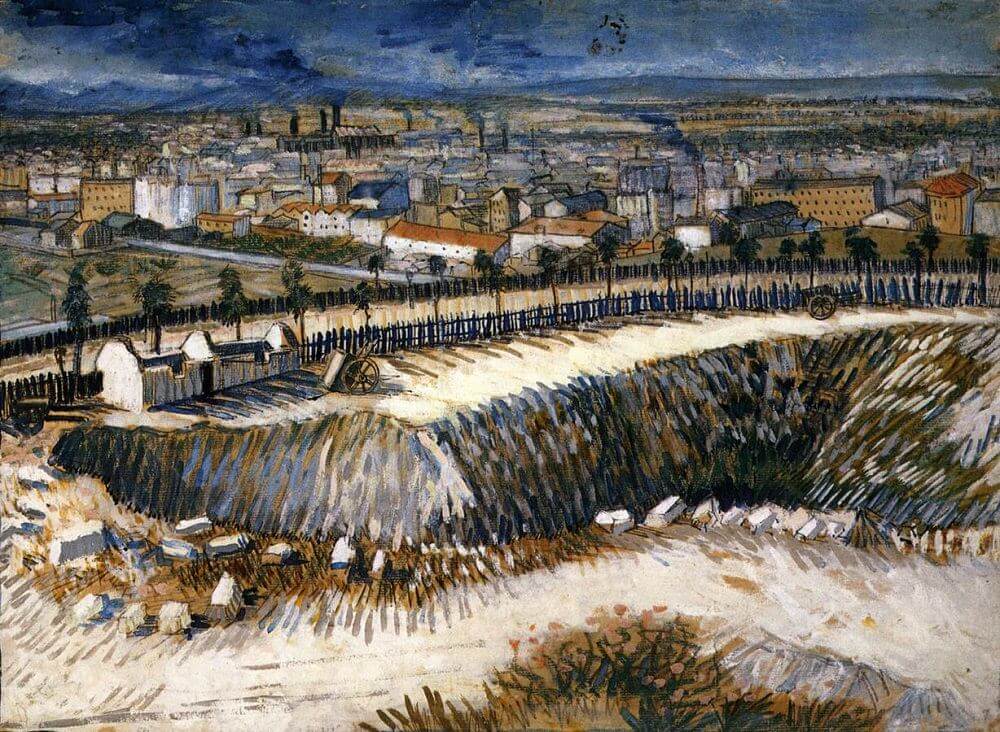Outskirts of Paris near Montmartre, 1887 by Vincent van Gogh

This picture is painted in watercolour, with solid areas of colour and controlled graphic strokes. This is Paris seen at the edges, this time not from within looking out, but from outside. We see Paris across a frontier marked by a path which also represents the meeting of town and country. The 'country' fills almost half the picture, but this enlarged foreground, closest to us, is virtually empty except for a roofless cottage, some quarried stones, and some handcarts.
The city, compressed into the middle ground, is dense, inhabited, busy. Factories smoke above and between packed houses and tenements. In the distance we see hills and another large stretch of countryside. This watercolour coincides chronologically with a series of depictions Van Gogh made of the edge of Paris. Here people stroll, brought out from the metropolis by horsedrawn trams. Again there is a considerable foreground, an expanse which distances Paris and its promenaders from the artist and the spectator. The space is awkward and the composition fragmented. By contrast, in the watercolour of Paris near Montmartre there is a clearer order, a sequence of planes viewed from above, composed coherently to distinguish town and country.




















